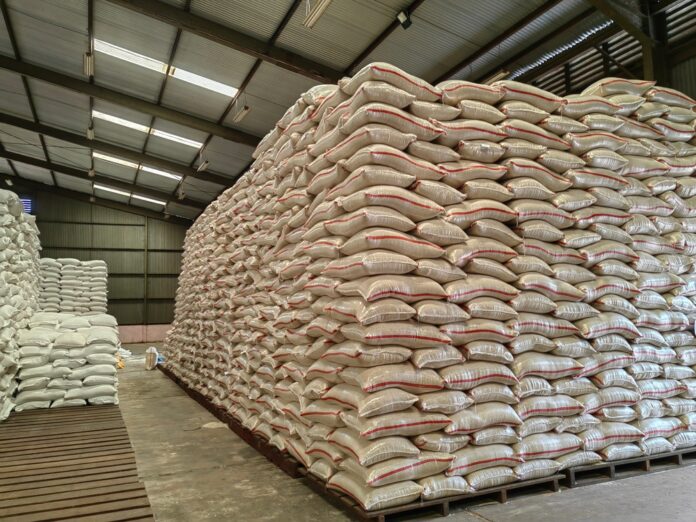The Philippines’ total rice inventory rose to 2.07 million metric tons at the end of September—coinciding with the start of the wet season harvest and a two-month import ban aimed at supporting palay prices. This reflected a 25 percent increase from the 1.66 million metric tons recorded in the same period last year, according to the Philippine Statistics Authority (PSA).
However, on a month-on-month basis, rice stocks declined by 11 percent, from 2.32 million metric tons in August to the current level at the end of September.
The year-on-year growth in rice stocks was driven largely by significant increases from government and household sources. Stocks held by the National Food Authority (NFA) surged by 197 percent, while those from households rose by 77 percent. In contrast, the commercial sector recorded a 22 percent decline compared to the previous year.
Month-on-month comparisons also showed declines across all sectors. The commercial sector saw a 21 percent reduction in inventory, household stocks fell by 3.5 percent, and NFA depositories posted a smaller decline of 0.9 percent.
Of the total rice inventory at the end of September, 39 percent came from the commercial sector, another 39 percent from households, and the remaining 22 percent from NFA depositories.
Average retail prices of regular milled rice declined sharply year on year in September. According to earlier PSA data, the average price of regular milled rice was P40.11 per kilo in the second half of September 2025, down from the P50.45 per kilo average recorded in the same period in 2024.
Meanwhile, the country’s total corn inventory in September dropped to 549,340 metric tons, a 12 percent decreasefrom 623,330 metric tons in the same month last year.
—







